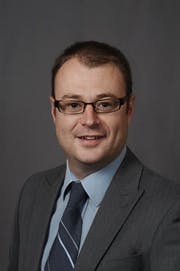Distribution automation provides utilities the ability to reduce demand and increase reliability without interfering with customers and relying on their behavior. Recent utility announcements of utility expenditures in volt/VAR and Fault Location Isolation and System Restoration (FLISR) schemes highlight utilities' growing desire for DA and the benefits they bring. However, the increasing complexity in the distribution system, such as distributed generation and new loads such as electric vehicles and non-linear devices, makes understanding their impacts on the DA schemes and vice-versa increasingly important.
“Utilities around the world are planning and deploying DA schemes that promise improved reliability and reduced power and energy consumption,” said David Lovelady, a technical training manager and expert on smart grid technologies for Siemens PTI. “Yet in order to realize these gains, a deep understanding of the technology and its capabilities/limitations is vital.”
Lovelady brings his knowledge and experience from conducting power system studies on a global scale to the classroom. For example, during his eight years with Siemens PTI, he has conducted DA studies in North America and provided expertise to utilities in Africa. He was also a co-convener for the Platform Technology Working Group of New York’s “Reforming the Energy Vision (REV)” initiative, driving the early developments of Distributed System Platform (DSP) architecture.
Registration for this course ends on April 12, 2017. For more information and registration please click here.
Receive a 10% discount by recommending this course to a colleague. Simply send an email to [email protected] stating your colleague’s name, email address and course title. Once your colleague’s registration is confirmed we will provide you a 10% discount coupon code valid till 12/31/17 for this course or any other scheduled 2017 course




